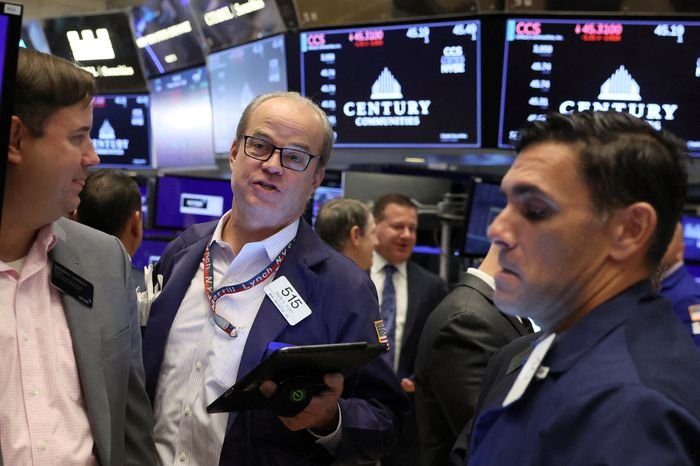U.S. stocks jumped to their biggest gains in more than two years, after softer-than-expected inflation data reignited bets that the Federal Reserve would slow the pace of its interest-rate increases.
Markets raced higher right out of the gate Thursday and kept building on those gains over the following hours. The S&P 500 added 207.80 points, or 5.5%, to 3956.37, while the technology-focused Nasdaq Composite soared 760.97 points, or 7.4%, to 11114.15. The Dow Jones Industrial Average rose 1,201.43 points, or 3.7%, to 33715.37.
October’s consumer price index rose just 0.4% for the month and 7.7% from a year ago, its lowest annual increase since January and a slowdown from the 8.2% annual pace in the prior month. Economists were expecting increases of 0.6% and 7.9%, according to Dow Jones. Excluding volatile food and energy costs, so-called core CPI increased 0.3% for the month and 6.3% on an annual basis, also less than expected
Treasury yields plunged after the CPI report, with the 10-year Treasury yield falling roughly 30 basis points to 3.81% as traders bet the Federal Reserve would slow its aggressive tightening campaign that’s weighed on markets all year. The yield on the 2-year Treasury dropped about 30 basis points to 4.32% (1 basis point equals 0.01%). The U.S. dollar, another recent pressure point for stocks, tumbled to its worst day since 2009 versus a basket of other currencies.
Thursday’s rally was a stark reminder of how much weight investors have been putting on the path of inflation this year. For much of 2022, the economy has stayed hotter than many investors anticipated. That has forced the Fed to raise interest rates at the fastest pace in decades—causing bond yields to soar and putting the stock market on track for its worst pullback since the global financial crisis.
Fed Chairman Jerome Powell suggested at a news conference last week that he wouldn’t necessarily need to see a series of lower inflation readings—as many traders had previously thought—to support slowing the pace of rate increases. That gives Thursday’s report significant weight for money managers who believe markets will be in the best position to stage a comeback when inflation peaks and the Fed is able to at least pause its rate hikes.
That is why many investors found so much relief in Thursday’s inflation data. The data has undoubtedly fueled fresh hope that the Fed will moderate its pace of interest-rate increases in 2023.
Tech stocks that have been hardest hit by the rise in inflation and surging interest rates led the gains Thursday. Shares of Amazon (AMZN:NASDAQ) were up about 12.2%. Apple (APPL:NASDAQ) and Microsoft (MSFT:NASDAQ) each advanced more than 8%. Shares of Meta (META:NASDAQ) rallied more than 10%. Tesla (TSLA:NASDAQ) jumped 7%. Semiconductor stocks got a boost too, with shares of Lam Research (LRCX:NASDAQ) gaining 12% and Applied Materials (AMAT:NASDAQ) rising more than 11%.
Yet there is still reason to be skeptical. Despite last month’s moderation, inflation is still very high. The market activity is also reminiscent of what happened between mid-June to early August. Stocks soared over the summer on bets that the Fed would pivot away from tightening monetary policy and shift from interest-rate increases to rate cuts as early as next year.
But the gains were fleeting. Markets slumped in both August and September, weighed down by stern talk from Fed officials about the need to keep raising rates, as well as hotter-than-expected inflation data.
Before the Fed’s December announcement, traders will get another inflation reading from the Labor Department, as well as the monthly jobs report. The case for the Fed to raise interest rates by half a point next month instead of three-quarters of a point

